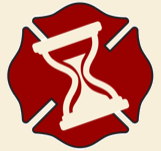Lieutenant William Lewin
Halifax Fire Department
1896-1898
LODD
Lieutenant William Lewin was injured at a call on January 1, 1898 on Maynard Street and died of his injuries on March 4, 1898. He was 29 years old, and married. The City Council officially acknowledged his death in session on March 22, 1898. His death certificates explains the cause of death as follows: “Compound fracture of skull and lacerations of brain tissue”. It lists his occupation as “Locksmith”.
He was a paid-on-call member of the department who originally started as a member of the Union Engine Company, attached to the No. 7 Hand Division (hand-pumped engine), the same Division as Rufus Keating, another LODD.
The funeral of Lieutenant William Lewin of the Halifax fire department, who was fatally injured by the falling chimney at the Tower road fire, took place in the afternoon from his late residence, and was very largely attended by civic officers, firemen and citizens generally.
The casket was drawn on the hose reel “Salamander” which had been very neatly draped and decorated.The whole of the upper part of the reel was covered in black and the casket rested on a stand in the centre. From four supports extending from the corners of the reel and joining above the casket was suspended a crown covered with crape, while hanging below the crown was a small bell which was kept tolling as the funeral procession moved. A miniature fire ladder rested on the front of the carriage and led up to the bell. The ladder and supports were in black and silver, and the design of the arrangement of the carriage was a good one. On top of the casket, and immediately below the bell, rested the white hat and belt of the late lieutenant; at either side of it, as well as on the carriage, were the many floral tributes that has been sent.They included a miniature fire ladder, at the top of which was a dove, from the members of No 1 steamer and No. 2 hose divisions; a handsome wreath from the mayor; wreaths from the fire commissioners, St. Mary’s young Men’s Society and the Union Protection Company, a cross from “brother firemen” and an anchor from C.W. Davies and employees. The reel ropes were covered in black and white.


